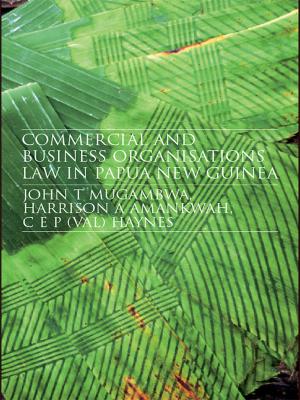| Author: | Malcolm A. Birkin | ISBN: | 9781351769594 |
| Publisher: | Taylor and Francis | Publication: | November 1, 2017 |
| Imprint: | Routledge | Language: | English |
| Author: | Malcolm A. Birkin |
| ISBN: | 9781351769594 |
| Publisher: | Taylor and Francis |
| Publication: | November 1, 2017 |
| Imprint: | Routledge |
| Language: | English |
This title was first published in 2000: Global competition is increasingly impacting on even the most isolated of companies; the only way for any company to sustain competitive advantage is by tapping into the single remaining area of great potential - the management of people. If we want to be an above-average company, we will need an above-average ratio of above-average people who perform at above-average levels. None of which will happen without above-average levels of management. Malcolm Birkin’s Building the Integrated Company offers a model for exploiting the human potential within organizations. This potential is one which, in previous decades, through an absence of focus on business basics and an adherence to mistaken ideas about sustainable competitive advantage, we have contrived to turn into all-too-limited performance. The first stage in any new learning process is to unlearn the misplaced concepts and bad habits we have developed. Section One of the book describes and contrasts the similarities and differences of American, European and Japanese management and then describes the characteristics of the Integrated Company, which has absorbed and perfected the best systems and philosophies from around the world. Anyone seeking to follow this lead needs to be able to distinguish the realities of these management systems from the myths. Section Two is built around a series of 13 detailed and scored questionnaires, containing over 240 individual questions, enabling the reader to assess every aspect of their business, from management focus to the behaviours of the workforce, against the Integrated Company model. Section Three, the largest and most important section, deals with integration, addressing the practical implementation of the systems and philosophies in a clear, logical and hands-on manner. As the name suggests, the Integrated Company is a holistic model, involving every aspect of the business. Nevertheless, managing people - the unlimited potential - remains the most complex
This title was first published in 2000: Global competition is increasingly impacting on even the most isolated of companies; the only way for any company to sustain competitive advantage is by tapping into the single remaining area of great potential - the management of people. If we want to be an above-average company, we will need an above-average ratio of above-average people who perform at above-average levels. None of which will happen without above-average levels of management. Malcolm Birkin’s Building the Integrated Company offers a model for exploiting the human potential within organizations. This potential is one which, in previous decades, through an absence of focus on business basics and an adherence to mistaken ideas about sustainable competitive advantage, we have contrived to turn into all-too-limited performance. The first stage in any new learning process is to unlearn the misplaced concepts and bad habits we have developed. Section One of the book describes and contrasts the similarities and differences of American, European and Japanese management and then describes the characteristics of the Integrated Company, which has absorbed and perfected the best systems and philosophies from around the world. Anyone seeking to follow this lead needs to be able to distinguish the realities of these management systems from the myths. Section Two is built around a series of 13 detailed and scored questionnaires, containing over 240 individual questions, enabling the reader to assess every aspect of their business, from management focus to the behaviours of the workforce, against the Integrated Company model. Section Three, the largest and most important section, deals with integration, addressing the practical implementation of the systems and philosophies in a clear, logical and hands-on manner. As the name suggests, the Integrated Company is a holistic model, involving every aspect of the business. Nevertheless, managing people - the unlimited potential - remains the most complex















